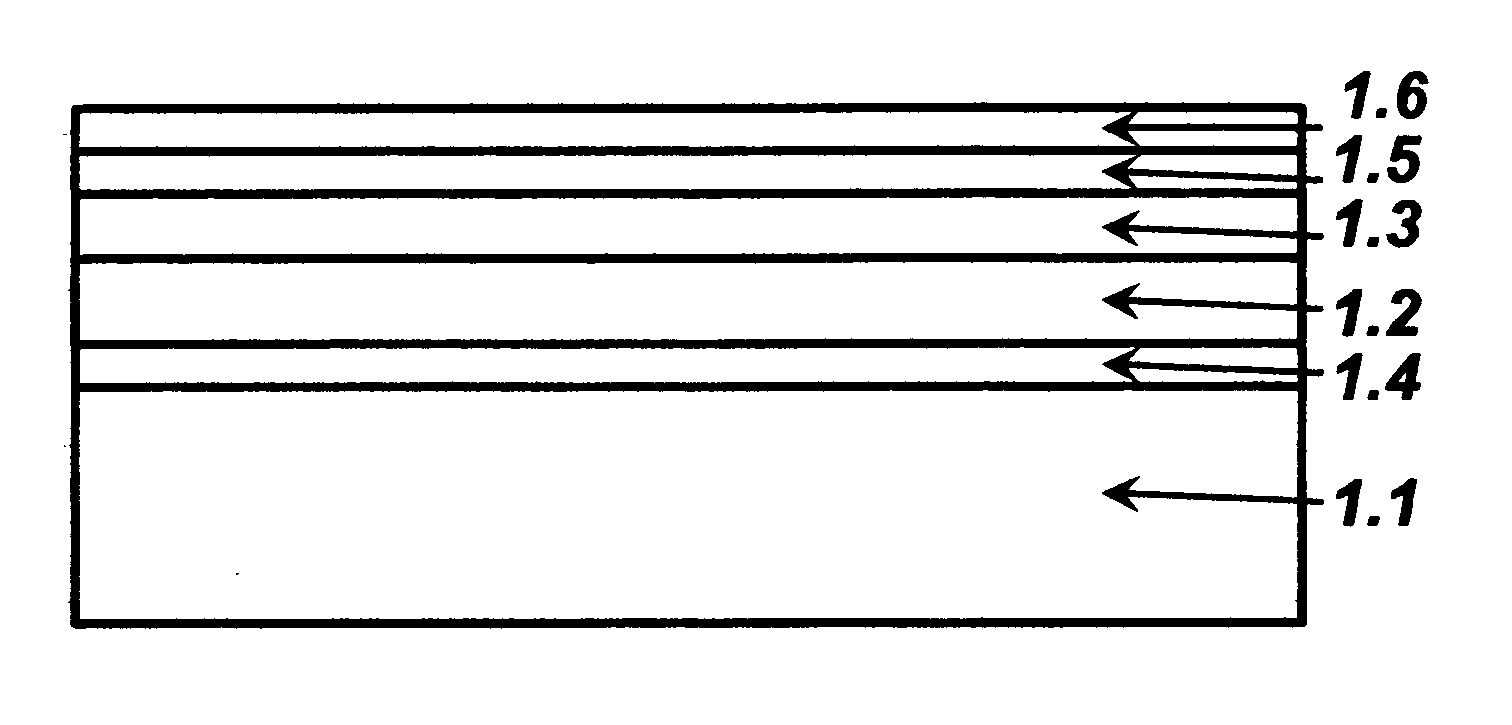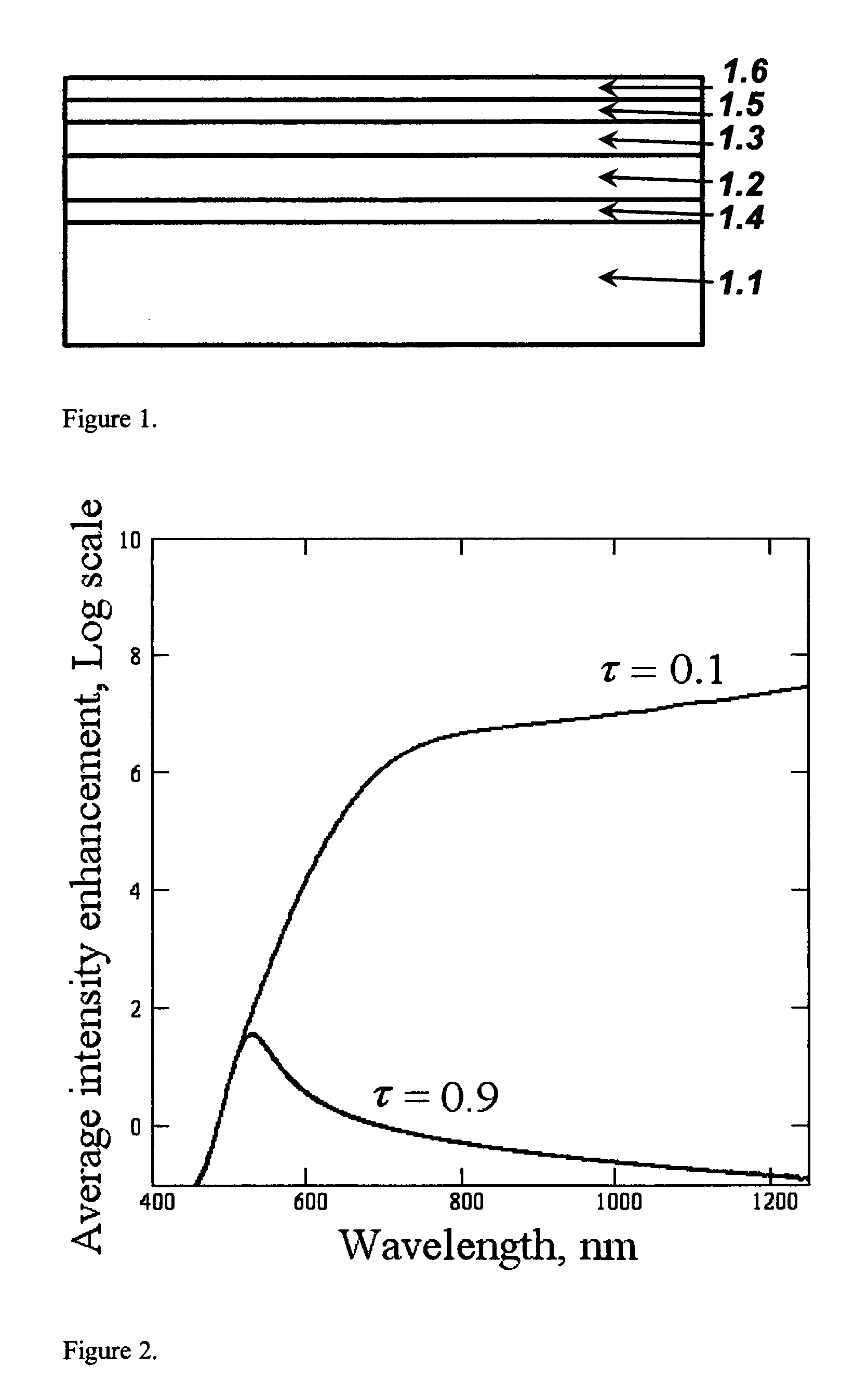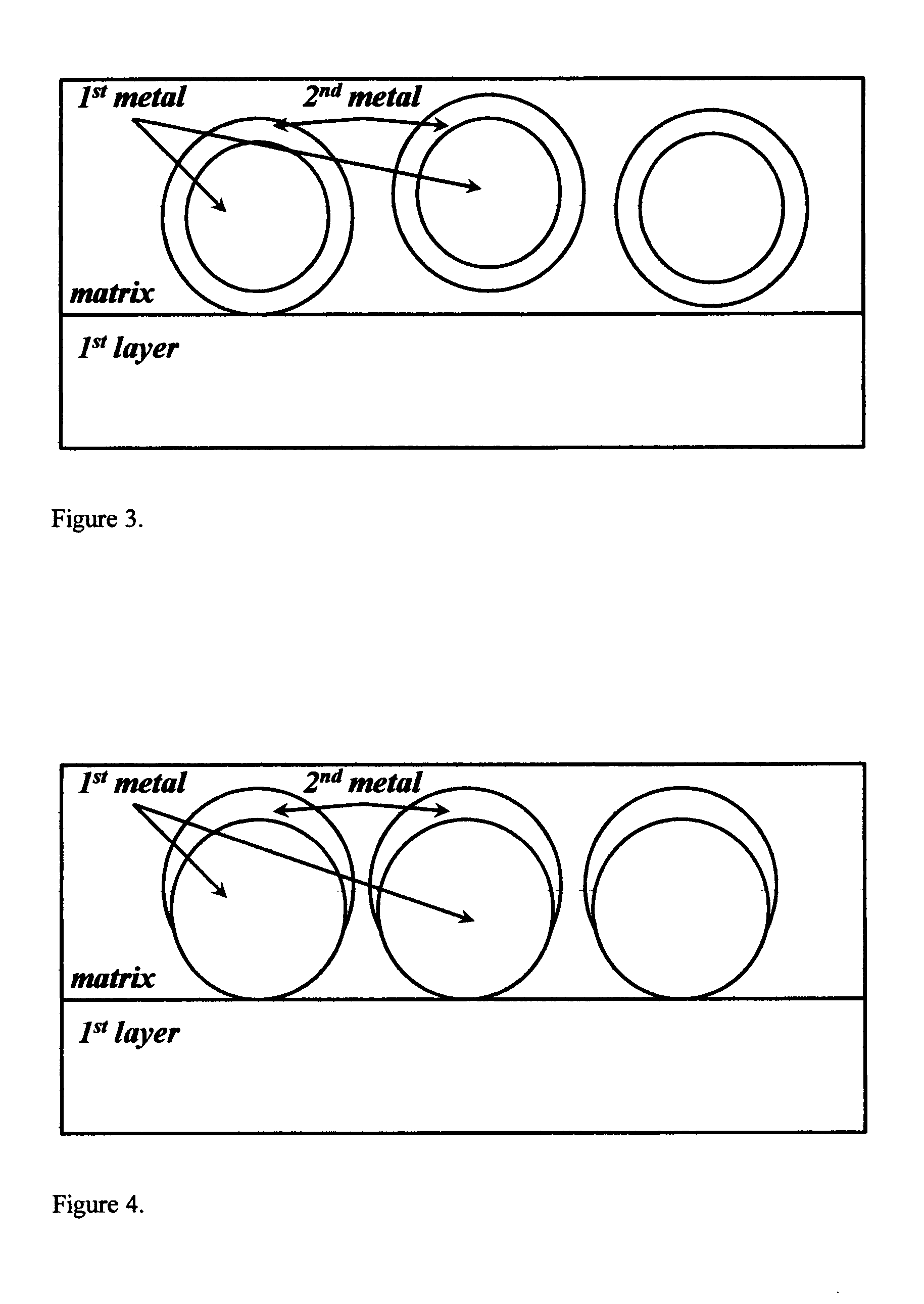Solar Cell Structure
a solar cell and structure technology, applied in the field of photovoltaic structure, can solve the problems of insufficient to meet the needs of most applications, the conversion efficiency of organic solar cells is typically significantly lower, and the cost of most applications is too high, so as to improve the conversion efficiency and enhance the photoelectric conversion efficiency
- Summary
- Abstract
- Description
- Claims
- Application Information
AI Technical Summary
Benefits of technology
Problems solved by technology
Method used
Image
Examples
first embodiment
[0054]According to the present invention the Plasmon-enhanced photovoltaic device shown in FIG. 1 is comprising a substrate 1.1; at least one photoconversion layer 1.2 disposed on said substrate, a plasmonic nanostructure layer 1.3 disposed on the surface of photoconversion layer, said plasmonic nanostructure layer having concentration of metal close to percolation threshold. and at least two electrodes 1.4 and 1.5, a first of which electrodes is in electrical contact with a first charge collection region of photoconversion layer in which electrical charges of a first polarity are concentrated, and a second of which electrodes is in electrical contact with a second charge collection region of said photoconversion layer in which electrical charges of a second polarity are concentrated. Additional protection and / or antireflection layer 1.6 can be employed in photovoltaic device as well to further improve the performance.
[0055]The photoconversion layer can be made of polycrystalline, s...
second embodiment
[0069]According to the present invention the Plasmon-enhanced photovoltaic device shown in FIG. 6 is comprising a substrate 6.1, a plasmonic nanostructure layer 6.3 disposed on said substrate, said plasmonic nanostructure layer having concentration of metal close to percolation threshold, at least one photoconversion layer 6.2 disposed on said plasmonic nanostructure layer, and at least two electrodes 6.4 and 6.5, a first of which electrodes is in electrical contact with a first charge collection region of photoconversion layer in which electrical charges of a first polarity are concentrated, and a second of which electrodes is in electrical contact with a second charge collection region of said photoconversion layer in which electrical charges of a second polarity are concentrated. Additional protection and / or antireflection layer 6.6 can be employed in photovoltaic device as well to further improve the performance.
[0070]All aspects disclosed in relation to the first embodiment are...
third embodiment
[0072]According to the present invention the method of manufacturing of a Plasmon-enhanced photovoltaic device comprises, as illustrated in FIG. 7: providing a substrate 7.1, applying, onto said substrate, first electrode 7.4, applying, onto said first electrode, a plasmonic nanostructure layer made of metal 7.2, said plasmonic nanostructure layer having concentration of metal close to percolation threshold, applying a photoconversion layer onto said plasmonic nanostructure layer, 7.3 and applying, onto said photoconversion layer a second electrode 7.5. Optionally, the second electrode can be coated with antireflection and / or protection layer 7.6.
[0073]Deposition of the first electrode (Step 1 in FIG. 7) and second electrode (Step 4 in FIG. 7) can be performed by physical vapor deposition (magnetron sputtering, Ion Assisted Ion Beam Deposition, Thermal Evaporation), chemical vapor deposition (including but not limited to metal-organic chemical vapor deposition, low pressure chemical...
PUM
 Login to View More
Login to View More Abstract
Description
Claims
Application Information
 Login to View More
Login to View More - R&D
- Intellectual Property
- Life Sciences
- Materials
- Tech Scout
- Unparalleled Data Quality
- Higher Quality Content
- 60% Fewer Hallucinations
Browse by: Latest US Patents, China's latest patents, Technical Efficacy Thesaurus, Application Domain, Technology Topic, Popular Technical Reports.
© 2025 PatSnap. All rights reserved.Legal|Privacy policy|Modern Slavery Act Transparency Statement|Sitemap|About US| Contact US: help@patsnap.com



